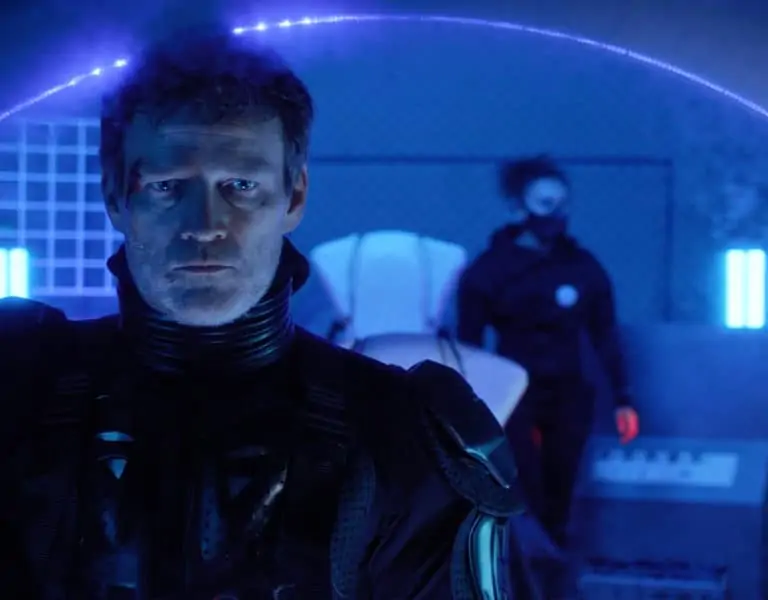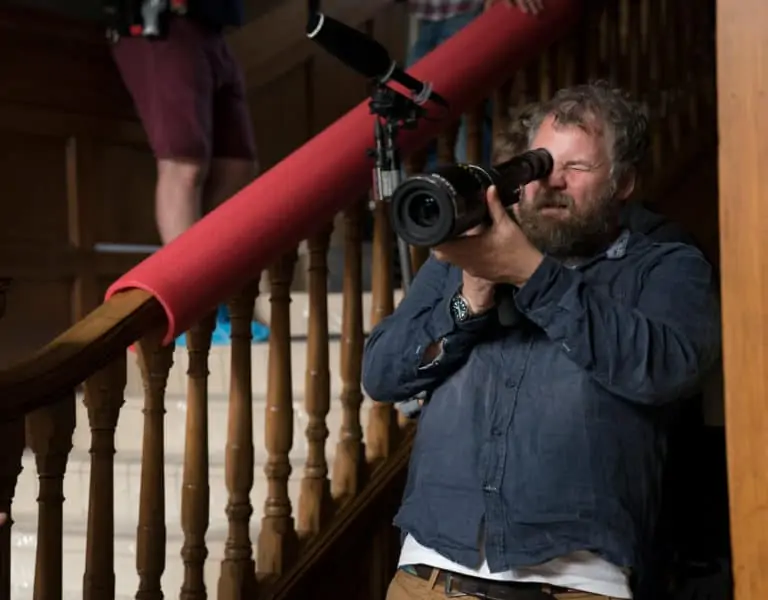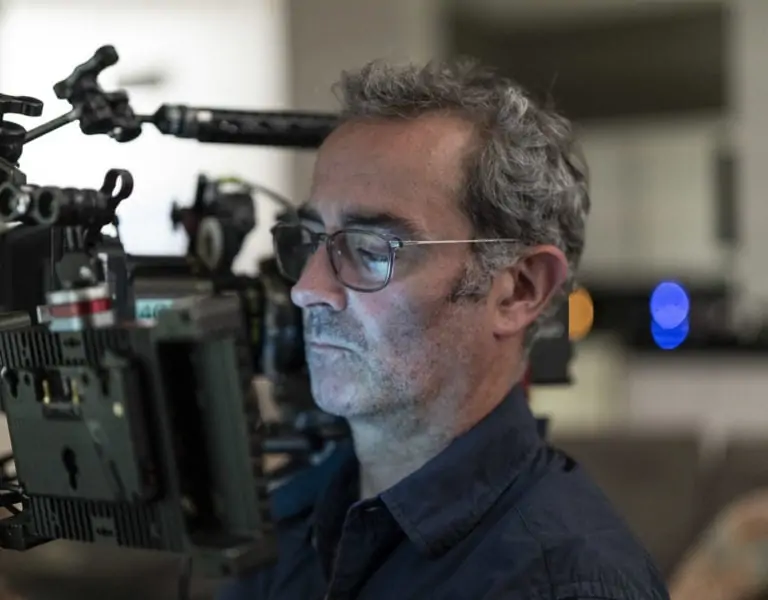In The Clouds
George Steel / The Aeronauts

In The Clouds
George Steel / The Aeronauts
Eddie Redmayne and Felicity Jones, co-stars of The Theory Of Everything, were reunited for director Tom Harper's adventure-drama, The Aeronauts, about a historic balloon expedition in 1862.
Briskly told in something very close to real time, this Amazon escapade, scheduled for theatrical and streaming release, is a bracing tale of scientific and personal endeavour.
Headstrong scientist James Glaisher and wealthy young widow Amelia Wren mount a pioneering balloon expedition to fly higher than anyone in history. As their perilous ascent reduces their chances of survival, the unlikely duo soon discover things about themselves - and one another - that help both of them find their place in the world.
"The initial excitement of telling the story quickly turned to 'how the heck are we going to do that?'" recalls the show's cinematographer George Steel. "The film is set in a balloon at 35,000 feet. That was a challenge."
Steel is a frequent collaborator with Harper on shows such as the BBC TV drama War and Peace and Peaky Blinders, as well as the feature Wild Rose. The filmmakers chose Red's DSMC2 camera with the Monstro sensor to capture all the high-flying action.
"Tom (who co-wrote the script with Jack Thorne) was adamant he didn't want it to be as fantastical as Around The World In 80 Days, particularly with a flashback structure where we needed to understand the period context for the flight," notes the cinematographer.
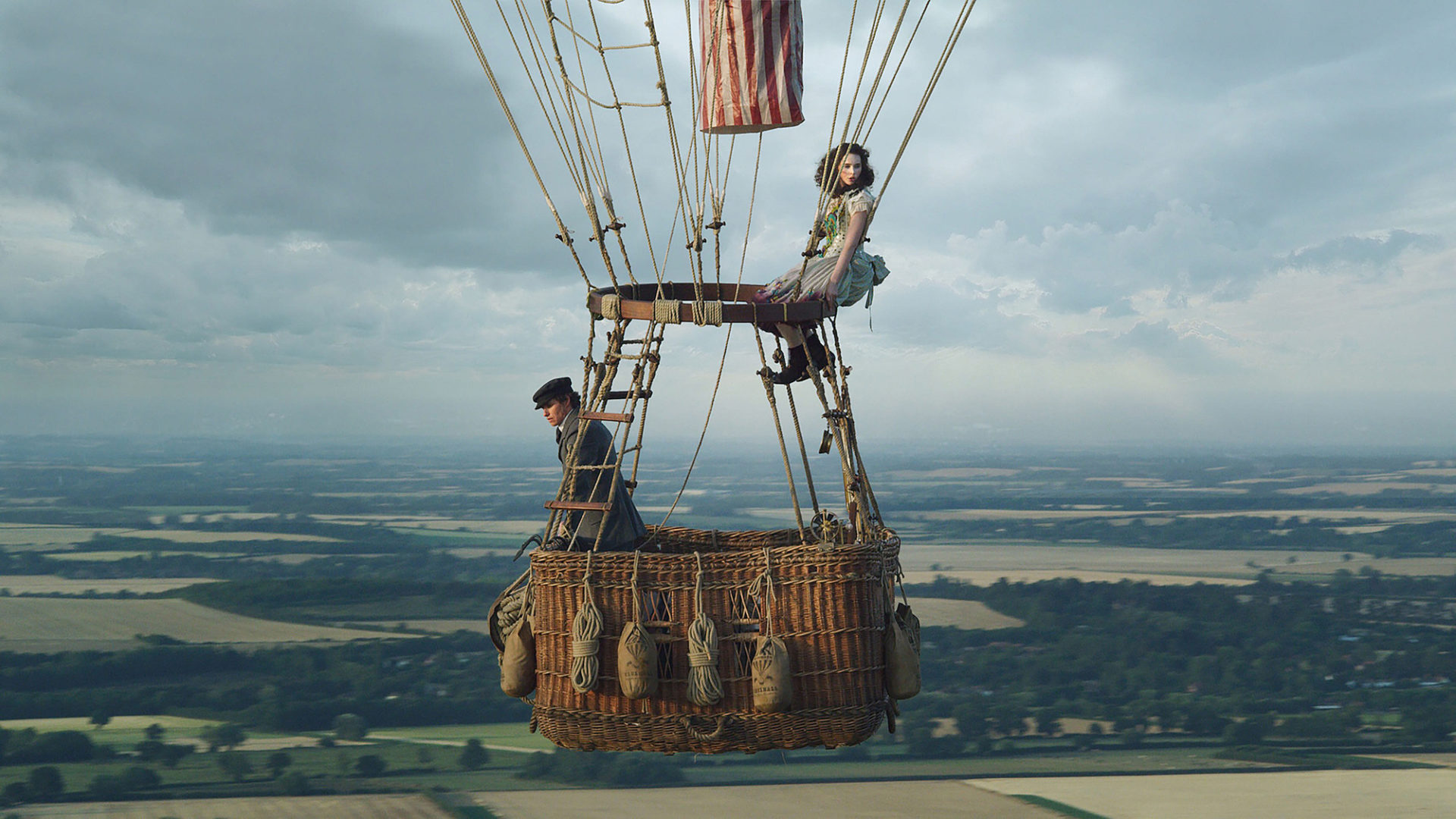
To ground the account in the realm of reality, rather than fairy-tale, the filmmakers considered shooting on a glacier at the top of a mountain. "We would have hung the balloon on a crane," explains Steel. "It's very hard to replicate altitude and the outdoors in a studio, but when we found out we had ten weeks for principal photography, we went back to the drawing board."
A lengthy pre-production period involved all hands on deck, including the first AD, the production design, VFX and special FX teams, as well as the director and cinematographer. "It was one of the most rewarding experiences of my filmmaking career," Steel says. "Everyone was working out how we were going to do this."
He adds, "We wanted to hold on to the notion of shooting as much in-camera as we could. With the amount of VFX, we were wary of making the look too modern, which wouldn't sell the time period. It was a juggling act between fantasy and documentary."

Accordingly, production itself had one foot in the air and one on terra firma. They built a life-size replica of the original hydrogen balloon and flew it with Redmayne and Jones aboard (along with a stunt co-ordinator and pilot) from an Oxfordshire airfield to capture air-to-air pictures from a helicopter.
In the film, one shot from the helicopter (filmed by Flying Pictures' cinematographer Adam Dale, piloted by Marc Wolff) depicts the characters in the wicker basket as a VFX shot of 1862 London unfolds beneath them.
For the balloon's take-off from the perspective of its basket - with Steel and the actors aboard - it was rigged to a crane and extended 200-feet into the air.
Then at West London's LH2 Studios, on a 100 x 100ft bluescreen stage rigged for 360-degree shooting, the production's main set was an 8 x 8ft basket that could be raised 35ft and lowered as the story went through different phases of flight. The basket was designed to tip and shake as the actors moved and their weight redistributed to mimic real motion.
"Sailing in a balloon is remarkably serene," says Steel. "There's such a smooth movement that we worried the VFX shots would look too clean."
Attention to detail included the special effect of a cold box to chill the temperature just enough to capture the actor's breath.
A complicated lighting set-up circled the basket rig for Steel to populate with a variety of light sources depending on the scene and enabling him to shoot from any angle.
"The main thing for us was light direction - where was it coming from, and how to match background plates that were yet to be built," Steel notes. "Our camera view was such that as the balloon rises higher, the light becomes harder, so we had to use a number of different types of fixtures."
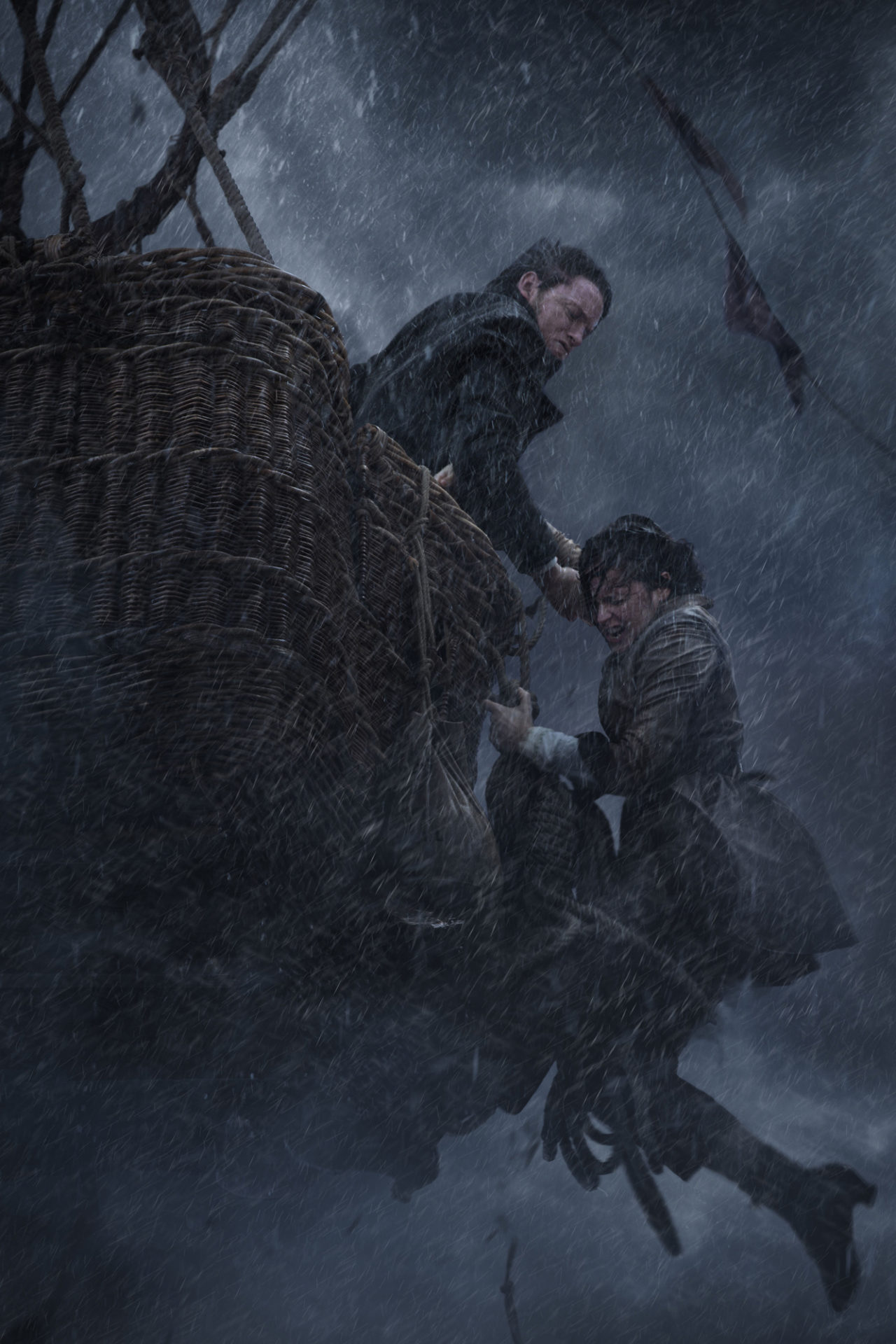
"It's almost unnatural how the focus falls off when 3,000 feet in the air. We found that a base of about 5 to 6 stops enabled us to shoot close-up and have enough fall off to see the background."
- George Steel
Steel constructed a chart of colour temperatures and softness for fixtures including SkyPanel LEDs, and HMI and Tungsten Molebeams, and an LRX remote head.
"In theory we journey from multiple light sources to a singular source while also accounting for time of day," he continues. "We start with softer colours - light blues. Then we breach clouds and enter storms. As you rise higher, the light pollution lessens and the light is harder, like looking out of a plane window. Then we're high above the clouds at the top of the world where light has a space-like quality. Lastly, we reverse that for the descent."
Working from VFX plates shot of skies in New Orleans and South Africa, lead VFX vendor Framestore created a visualisation of the skyscape. Using an iPad, Steel could pan 360-degrees around the studio and see the comped-in backgrounds animated on the bluescreen in real time. "That was incredibly useful," he notes. "We knew, for example, that when we're at a certain point, the sun is in a certain position, and when we're about to enter a cloud, the colour temp needed to be 'X.'"
Different climatic conditions mean different light settings, but doing that with HMI means loss of colour temperature with every change. "Panalux came up with an ingenious box that we could place in front of the light and fill with smoke," Steel relates. "As we filled it, the light changed and it felt like you were going into a cloud. You could almost see the edge of the cloud on the actor's face. We also experimented with different colours of smoke, for instance, to convey a snowstorm.
"That homemade Heath Robinson-style invention is what I love about moviemaking. The whole thing is a grand illusion."
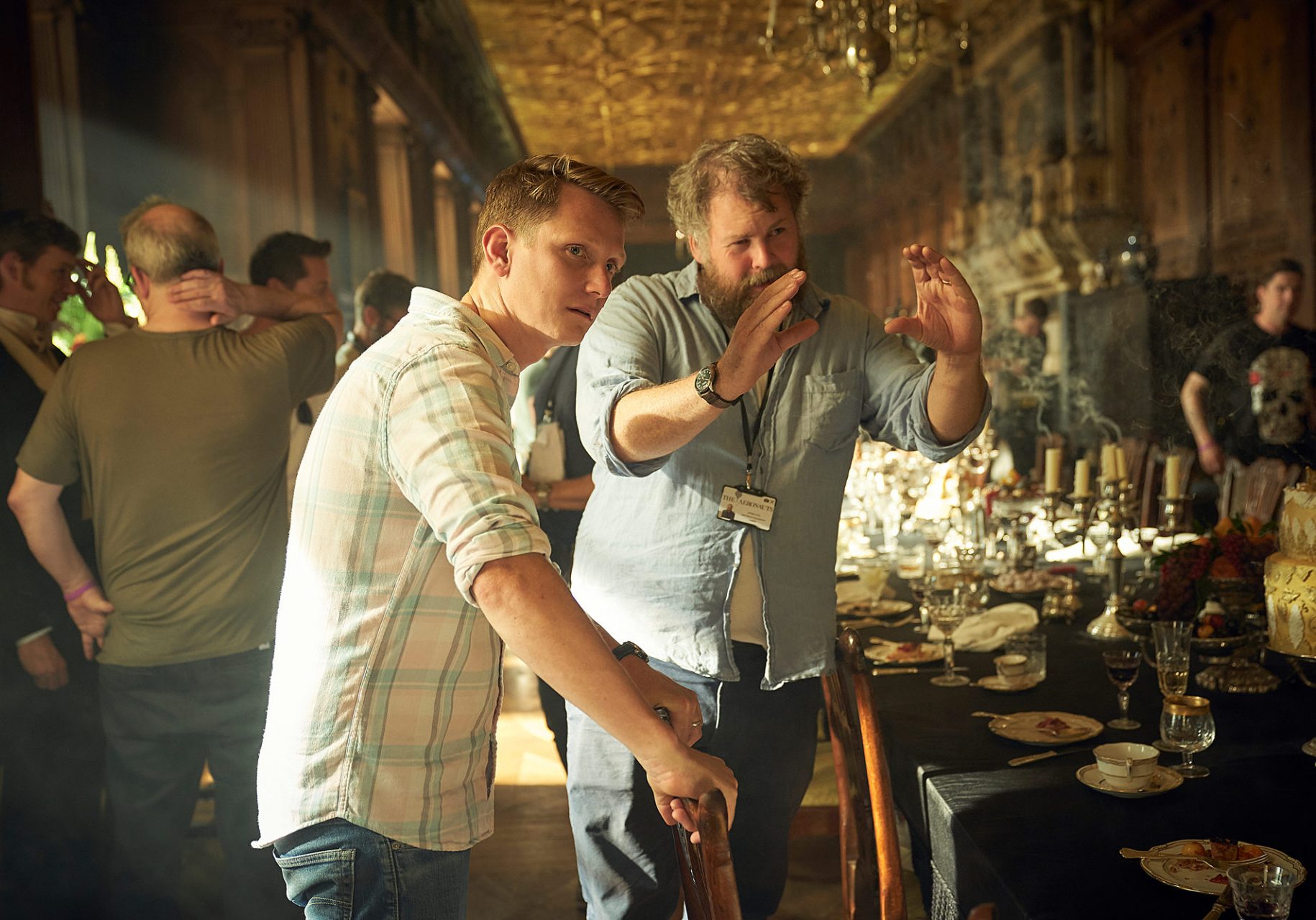
Aerial tests from the balloon helped Steel determine his lens, camera package and shooting style. Steel shot in 8K RecCode RAW compressed at 7:1. The Red's compact body helped with the need to go handheld in the confines of the basket with the actors.
"I actually think it is the camera Red has gotten right," Steel observes. "The full-frame sensor really captures colour in clarity and detail, and its ability to capture skin tone is extraordinary. We tested alongside other digital cameras and 35mm film and it was the format that, when we put it to a blind test, people reacted most favourably to."
Clean air images in the skies contrasted with the dirtier environs of period London. "Here, we softened the image with a bit of grain, and I used diffusion to take the edge off the image," he notes.
During tests in the balloon, Steel discovered something odd about depth-of-field. "It's almost unnatural how the focus falls off when 3,000 feet in the air. We found that a base of about 5 to 6 stops enabled us to shoot close-up and have enough fall off to see the background."

Scenes in the basket were predominantly on 24mm glass, with some scenes utilising a super-wide 14mm lens. He tried Leitz and a set of Zeiss glass before settling on Panavision Primo 70s.
"The Primos give a very sharp but not too harsh picture," Steel remarks. "The fall-off from focus is gentle and smooth, and had that slightly 3D feeling. More importantly, our focus pullers liked them."
The decision to shoot spherical with Anamorphic Panavision G Series lenses on the flashbacks was made early-on, since a version of the film being made for IMAX in territories such as the UK has a dual aspect ratio. These scenes start 2.39:1 and open to 1.85:1 as the balloon rises into the sky's wider vistas.
Steel designed just one LUT, which DIT Tom Gough would run through Pomfort's LiveGrade to manage the colour workflow on-set. "With 666 VFX shots, the files would be transformed and converted multiple times from RAW to EXR, so we wanted to keep the procedure as simple as possible," says Steel.
On seeing a screening of the film, Steel concludes, "When I watched the finished picture, I found myself carried away by the story and at moments wondering how that was ever possible. It was amazing. I felt like I was in the clouds."


